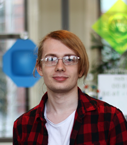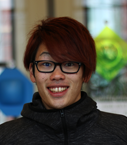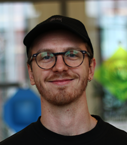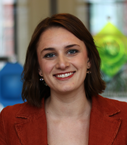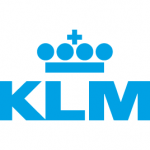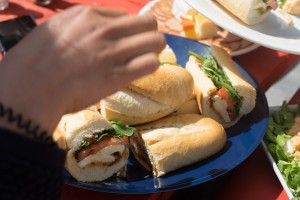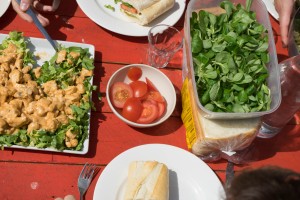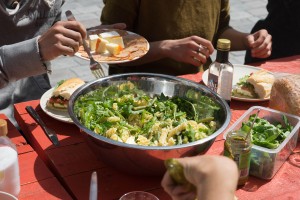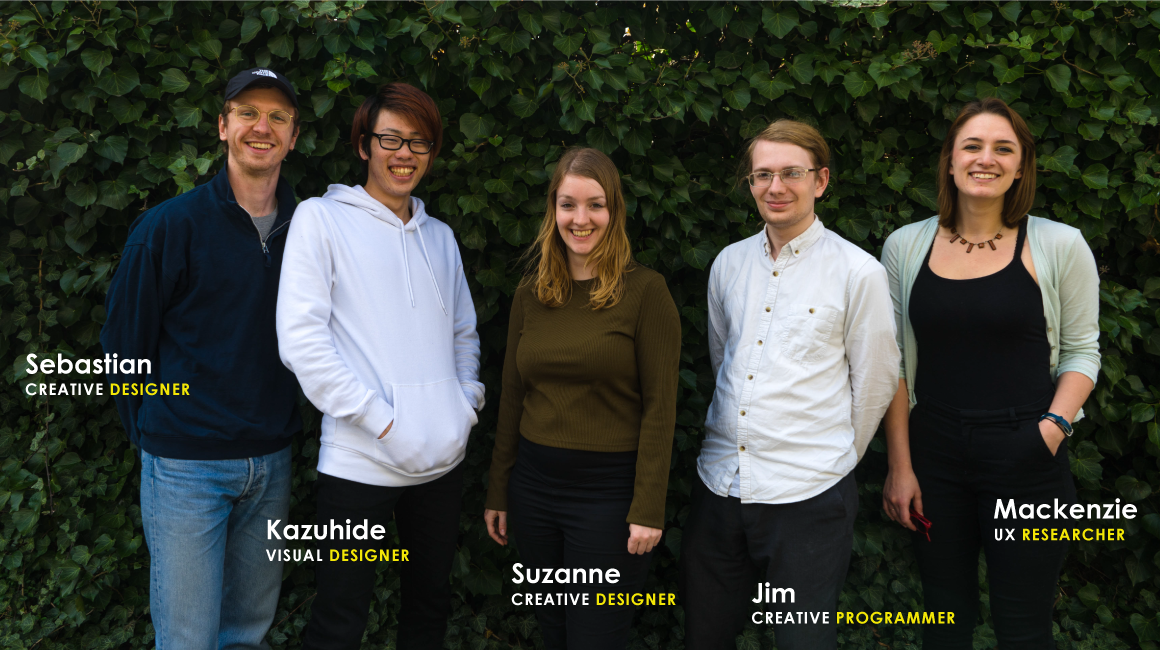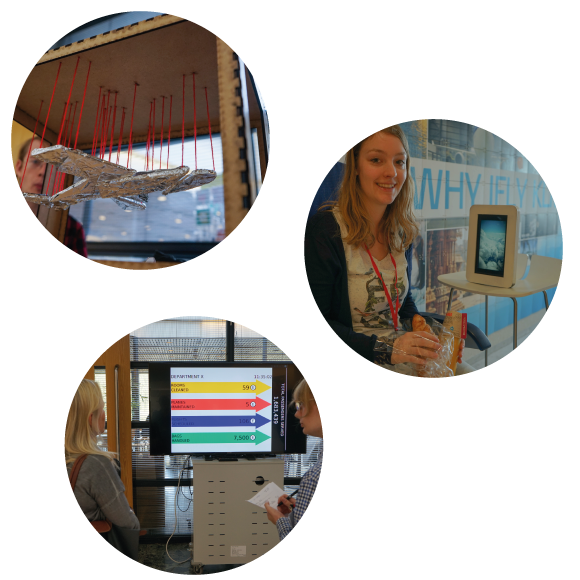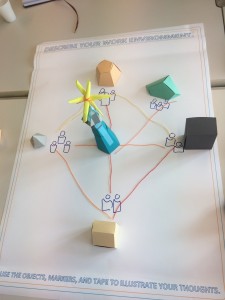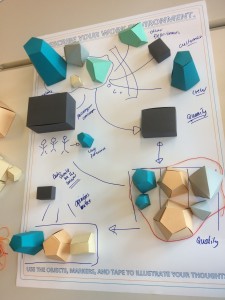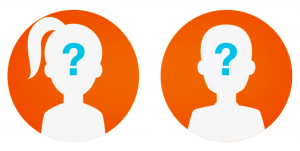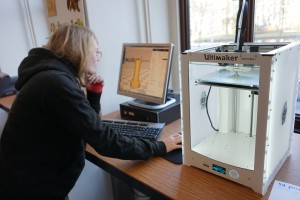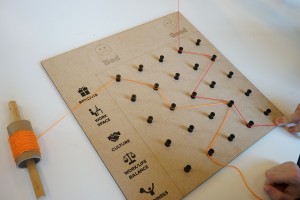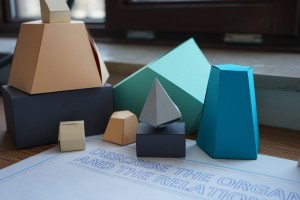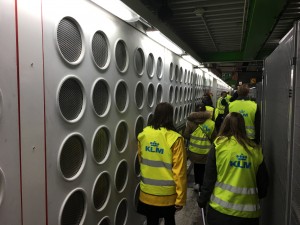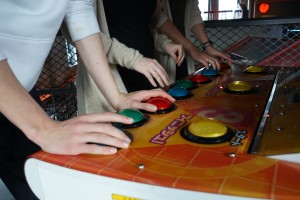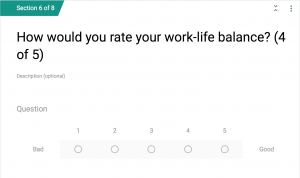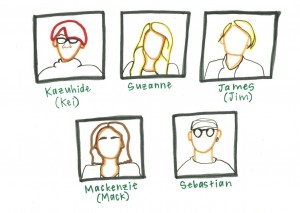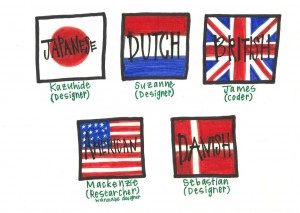A brief wrap up of Sprints 3,4 and 5 – Movie Edition, brought to you by Kei’s Chicken
Hello! We are Kazuhide (visual designer) and Mackenzie (researcher and creative designer), working on the Winning Way of Working (WWOW). We have finished Sprint 5 and are starting to work towards the final Presentation, which takes place on 29 June 2017! In this post I will tell you about our workflow from Sprint 3 (1-13 April), Sprint 4 (17 April – 4 May), and Sprint 5 (8-24 May).
SPRINT 3
During sprint 3 we processed and applied our research in order to determine the main criteria for our design solution for the WWOW project. These top 3 criteria consist of: connection, interaction, and office space. More details about what each of these elements should include follows:
Top#3 Connection:
1. Physical and digital
2. Inspire employee routines
3. Multiple Locations
Top#3 Interaction:
1. Shared Use
2. Comprehension
3. Immediate Usability
Top#3 Office Space:
1. Balance and Variety
2. Auditory Aesthetics
3. Natural Elements
SPRINT 4
During sprint 4 we applied and transformed these criteria further to make the four central elements of our design solution. These consist of four elements that we agreed, as a team, to be important parts of our final design solution. Therefore, we decided that our design solution should be/create:
1. Digital and Physical
2. Plants
3. Diverse Space
4. History of KLM
Based on the criteria from sprint 3 and the design elements above, we brainstormed about the design solution, developed a concept, and made a prototype.
Concept
From our research within KLM, we determined that there is a lack of (visual and physical) consistency within the buildings of different workers and departments. This intrigued us to develop a concept campaign in order to spread awareness of the winning way of working (WWOW). This concept campaign is about how KLM should be working flexibly, diversely, and collaboratively.
Central concept and goal: to provide a design solution that facilitates and promotes spontaneous encounters among KLM employees from diverse departments. We aim to design a space where informal meetings, relaxation, and connection within KLM can blossom.
Prototype
In order to achieve our concept and its goals we developed a prototype. It is the moving frame prototype, 1:8 scale. This video shows you the hanging system and how the frame moves. The prototype is very versatile and this video shows some of the ways that it could be used as a room separator, ceiling display, or touchable display for meetings and presentations.
This is a 3D visualization of this prototype. In this video, you can see how many hanging frames might look in an open space. The video simulates an open office or entrance. This video allows for another way to imagine the real size and atmosphere of our concept.
SPRINT 5
Sprint5 Short Summary Video!
In this sprint, we mainly made the frame and insert content.
Frame:
-Size: 1400 x 1200mm
-Holds changeable inserts, allowing for flexible and adaptable space. It is suspended from the ceiling and can be used as a room separator, ceiling decoration, or table.
Inserts:
-Size: 1280 x 1080mm
-Removable
-Allows office spaces to change what offices are made of as employees needs shift.
-Two types: Moss and Digital Touch Screen
STEPS
・brainstorm digital contents
We brainstormed and designed digital content and control panel for the frame.
・Going to Fiber Festival
Sebastian and Jim went to a workshop with Refik Anadol for research and inspiration.
・POV tour / Scrap Plaza
We went to KLM Point of View Building and Scrap Plaza for researching office and inspiration. There are a lot cool and unique designs and we met some engineers. (My favorite was a library of POV. -Kazuhide)
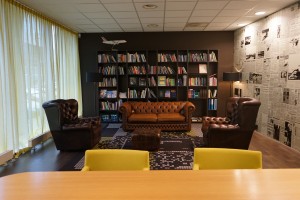
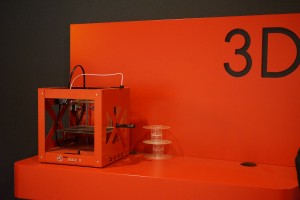
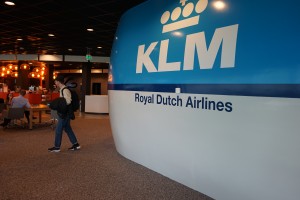
・Making the frame
We bought materials and made big frame in the HvA wood shop.
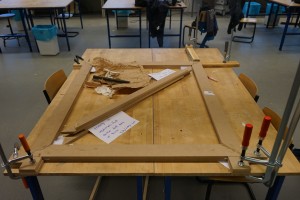
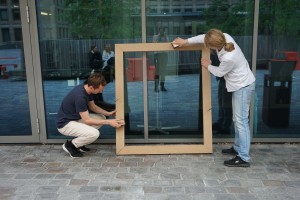
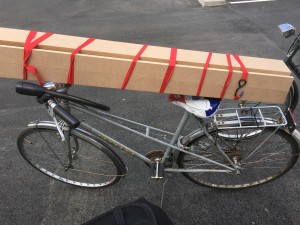
・Moss research
We researched about moss for the physical insert in the frame. We found the moss that is able to preserve itself, and will stay green without water.
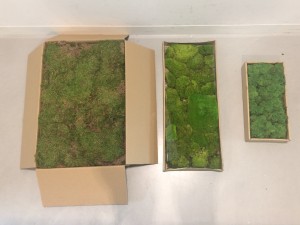
・buy Styrofoam
We got big Styrofoam boards for the screen to project digital insert for the frame.
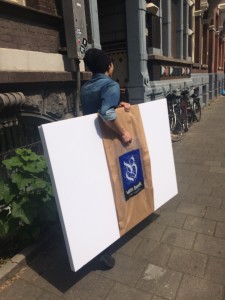
・designing digital space
We designed digital space for the digital insert in the frame. Users can experience connection in this system by touching screen. We prototyped and created our own touch screen by using a Kinect and projector.
・Control panel
We made the prototype of the control panel. Employees can customize their space by moving frames with the control panel on a tablet. There are four presets for the frame. Jesse Klijn, he is a member of Schiphol team, helped us to make the digital simulation of control panel on a tablet.
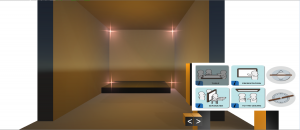
Only four weeks to finish making our 1:1 scale Moving Frame… Lots to do and prepare! See you at LabFEST on 21 June 2017!



